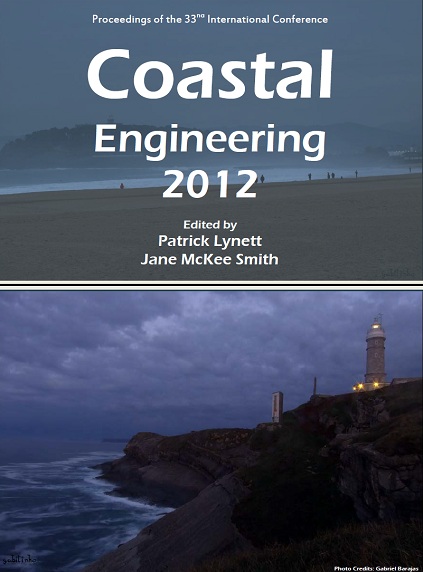Abstract
The need of an improved harbour access resulted into the construction of two new rubble mound breakwaters in Ostend, Belgium (Verhaeghe et al., 2010). Extensive soil investigation during the design phase of the breakwaters showed that the most northern part of the western breakwater is located in a zone containing a thick upper layer of soft material. To deal with the bad soil characteristics, a very strong geotextile was used to serve as a kind of armouring of the breakwater. An extensive analysis was carried out to determine how fast construction could go on, avoiding overall geotechnical failing, and to determine the settlements to be expected. During construction of the western breakwater, extensive settlement measurements were performed. This paper describes the settlement calculations performed with Plaxis2D versus the settlement measurements performed on site, leading to an optimised phasing of the construction works.References
Asaoka, A. 1978. Observational Procedure of Settlement Prediction. Soils and Foundations, Vol. 18, No. 4, Dec. 1978. Japanese Society of Soil Mechanics and Foundation Engineering. pp. 87-101.
De Rouck, J., Van Doorslaer, K., Goemaere, J., and H. Verhaeghe. 2010. Geotechnical design of breakwaters in Ostend on very soft soil, Proceedings of 32nd International Conference on Coastal Engineering, ASCE.
Verhaeghe, H., Van Damme, L., Goemaere, J., De Rouck, J. and Van Alboom, W. 2010. Construction of two new breakwaters at Ostend leading to an improved harbour access, Proceedings of 32nd
International Conference on Coastal Engineering, ASCE. DGGT (Deutsche Gesellschaft fur Geotechnik), 1997. Empfehlungen fur Bewehrungen aus Geokunststoffen (EBGEO, Recommendations for Reinforcement with Geosynthetics), ISBN 3-433-01324-1.
FGSV (Forschungsgesellschaft fur Straßen- und Verkehrswesen), 1994. Merkblatt fur die Anwendung von Geotextilien und Geogittern im Erdbau des Straßenbaus (German guidelines for geotextiles and geogrids in soil- and road construction).

